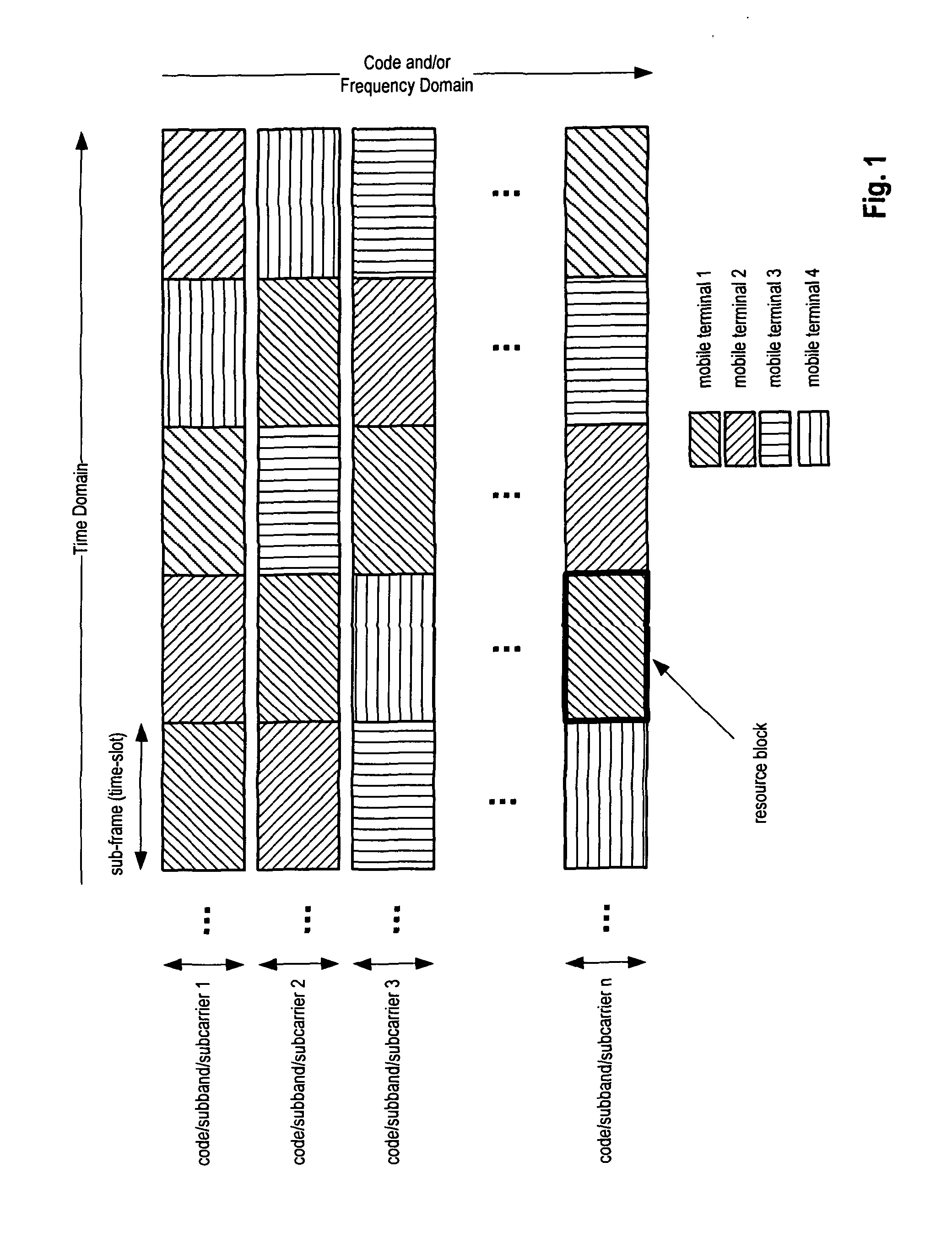Control channel signaling using code points for indicating the scheduling mode
a control channel and code point technology, applied in the field of control channel signals, to achieve the effect of simplifying the rate matching of the control channel and reducing the number of different control channel sizes
- Summary
- Abstract
- Description
- Claims
- Application Information
AI Technical Summary
Benefits of technology
Problems solved by technology
Method used
Image
Examples
Embodiment Construction
[0076]The following paragraphs will describe various embodiments of the invention. For exemplary purposes only, most of the embodiments are outlined in relation to an (evolved) UMTS communication system according to the SAE / LTE discussed in the Technical Background section above. It should be noted that the invention may be advantageously used for example in connection with a mobile communication system such as the SAE / LTE communication system previously described or in connection with multi-carrier systems such as OFDM-based systems, but the invention is not limited to its use in this particular exemplary communication network.
[0077]Before discussing the various embodiments of the invention in further detail below, the following paragraphs will give a brief overview on the meaning of several terms frequently used herein and their interrelation and dependencies. Generally, a protocol data unit may be considered a data packet of a specific protocol layer that is used to convey one or...
PUM
 Login to View More
Login to View More Abstract
Description
Claims
Application Information
 Login to View More
Login to View More - R&D
- Intellectual Property
- Life Sciences
- Materials
- Tech Scout
- Unparalleled Data Quality
- Higher Quality Content
- 60% Fewer Hallucinations
Browse by: Latest US Patents, China's latest patents, Technical Efficacy Thesaurus, Application Domain, Technology Topic, Popular Technical Reports.
© 2025 PatSnap. All rights reserved.Legal|Privacy policy|Modern Slavery Act Transparency Statement|Sitemap|About US| Contact US: help@patsnap.com



